-
Posts
147 -
Joined
-
Last visited
Content Type
Profiles
Forums
Store
Help Articles
Posts posted by Merkinz
-
-
Well, 8 hours later and I'd say that this has nothing to do with the water, I was expecting (almost hoping) that the tap water would show little rise, and the others would show a much greater rise. However it was the bottled water that showed less rise than the others 🤷♂️
I'll try the recipe again but this time do one or more of the following:
- Use more yeast
- Start with warmer water
- Proof the dough in a warmer space
- Proof for longer
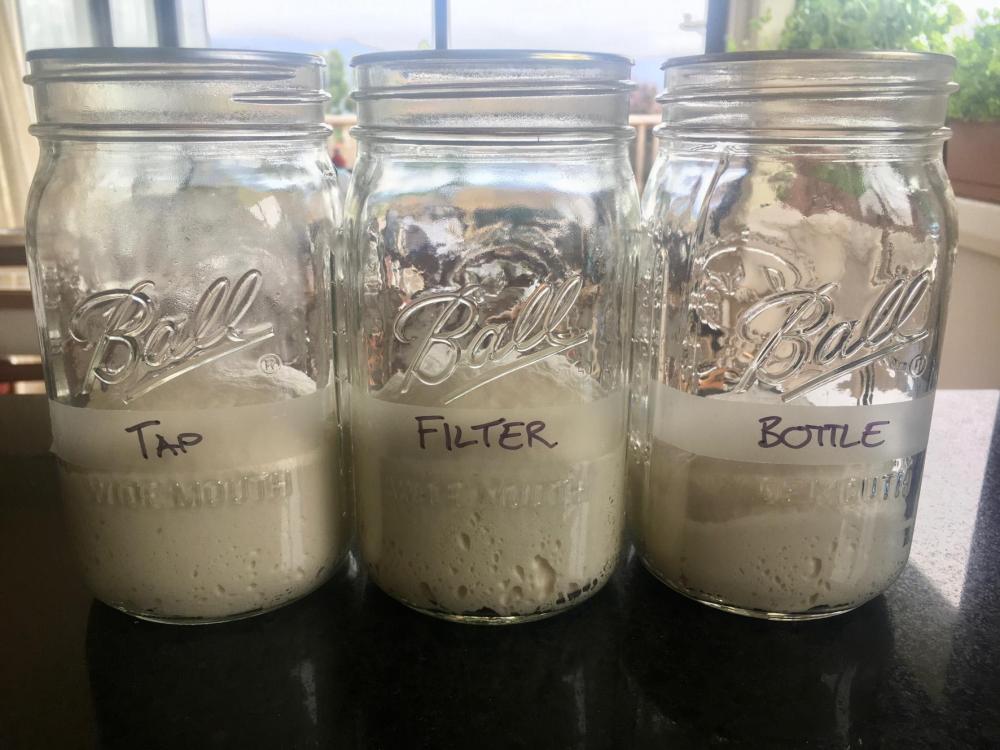
-
 1
1
-
 1
1
-
-
Quote
Is this what you used?
https://www.amazon.com/Antimo-Caputo-Lievito-Active-Yeast/dp/B07QF4T64V
Yep, that's the yeast I'm using.
QuoteIf this is your first bake in the Koda, then I'm impressed. Sure, the dough isn't where it needs to be yet, but, you're doing a lot of things right.
Thanks! Yep that was the very first pie in the Koda. The 16" model gives me the same, if not more space to work in than I have in my home oven with a pizza steel jacked up quite high when making my NY pizzas. In addition to that I propped the Koda up on quite a high table which made it even easier to work with. Awesome bit of kit!
QuoteWhat bottled waters do you have access to? Can you get Evian? Fiji?
That's super interesting what you brought up about the water We have chlorinated tap water here, and we have a filter in addition to the tap. I always drink from the filtered line as some days you get a strong chlorine smell from the water directly from the tap. However I always make pizzas using water directly from the tap 🤔
We have chlorinated tap water here, and we have a filter in addition to the tap. I always drink from the filtered line as some days you get a strong chlorine smell from the water directly from the tap. However I always make pizzas using water directly from the tap 🤔
The other week when I made pizzas I used a new can of the above yeast (was using some old generic IDY prior) and water from the filter line. It overproofed like crazy. I put it entirely down to the fact that I was using new yeast, and a different yeast at that. But maybe it was a combination of the new yeast and the filtered water! 🤔
Interestingly I left two balls from yesterday uncooked overnight and even now, nearly 22 hours into the second ferment, they're looking quite sad, like they've barely risen at all.
After reading this this morning I mixed up three fresh dough balls: One with the tap water, one with the filtered water, and one with the only bottled water I had on hand (no idea if it's 'hard / soft', label shown below). It'll be interesting to see how these progress throughout the day today.
As for Evian & Fiji water, Evian isn't that big over here but I have seen Fiji in smaller quantities. I've have a browse at the supermarket the next time I'm there.
What specifically should I be looking for when I'm looking at bottled water labels?
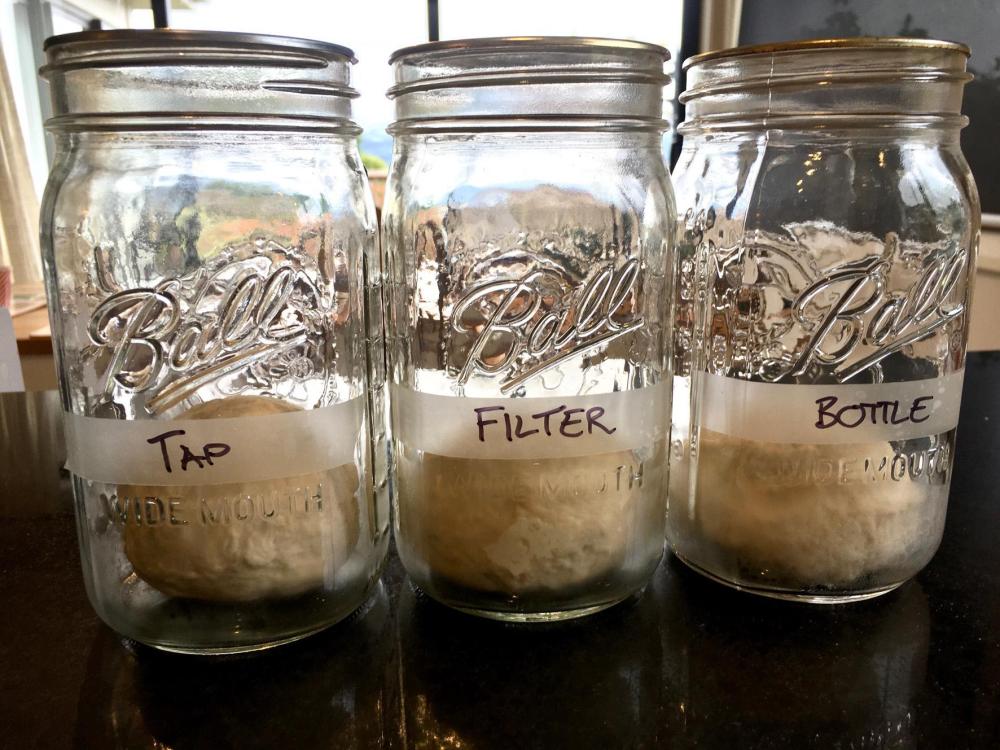
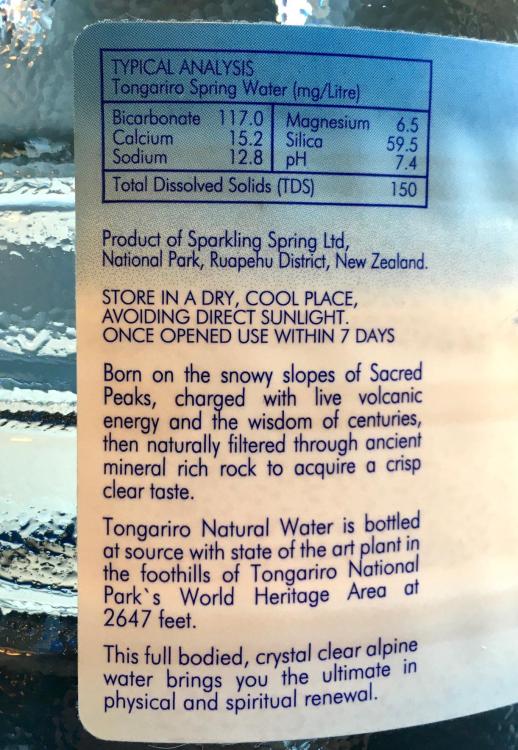
-
 2
2
-
-
Got my Ooni Koda 16" the other day and did my first cook today. I've just been cooking NY pies in my home oven on a 12mm thick steel for quite a few years up until now to great success. I've tried Neapolitan in on the steel in the oven but for obvious reasons haven't had much success so I'm pretty excited about finally getting a Koda.
However, the first foray didn't quite hit the mark, more specifically my dough was lacking but the oven was amazing!
Recipe:60% - 500g Water (tap cold)
100% - 835g Flour (50/50 mix of Caputo Manitoba & Caputo Classic OO)
2.7% - 22.5g Salt
0.06% - 0.5g Instant Dry Yeast (brand new pack of Caputo IDY)
- Combine flour and salt in one bowl, water and yeast in another bowl
- Combine wet & dry then mix for ~7 minutes in a stand mixer
- Bulk ferment for 2 hours at room temp
- Ball (250g per) and ferment for a further ~7 hours at room temp
- Preheat oven for 30 minutes on high
- Cook pies turning regularly
Unfortunately I got very little oven spring and even once the pizza was cooked there was definitely a layer of 'less than cooked' dough across the middle of the pizza.
I'd like to know where I went wrong, I think it was pretty clear that the dough didn't rise enough (if at all!), but also maybe I didn't mix the dough long enough? I know the yeast is good as it's been overactive for the other applications I've been using it for. I may have under measured slightly as my scale only does 0.1g increments and it felt like I could have used something with greater precision. Also 'room temp' here is slightly on the cooler side.
Any ideas or suggestions?
Straight after mixing:

Straight after mixing:
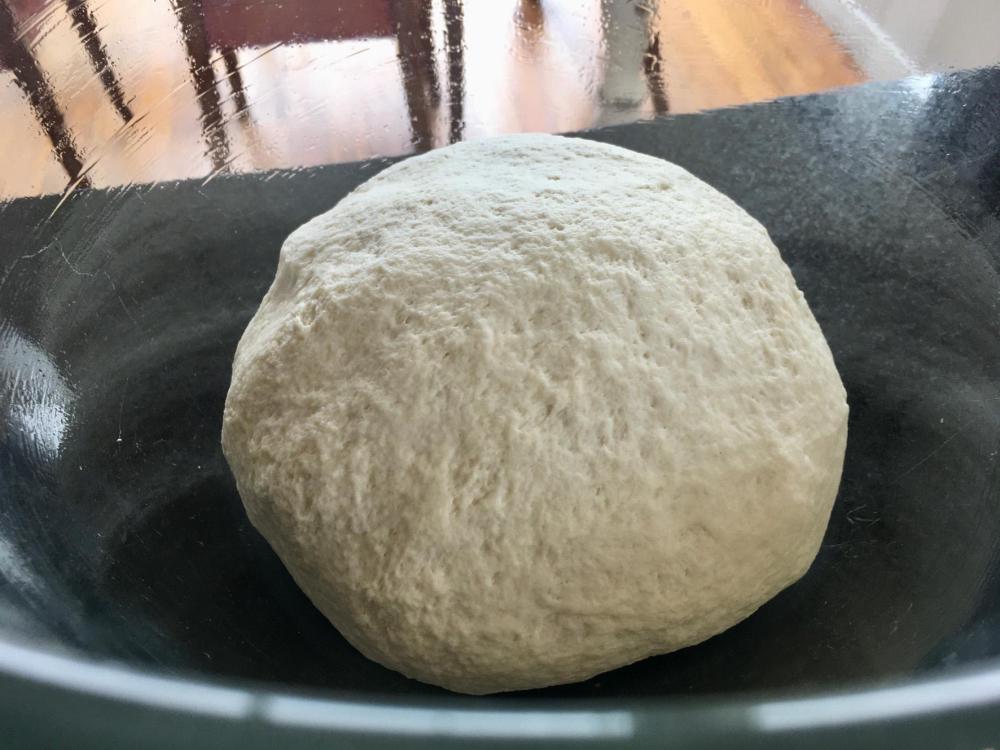
Balled after first ferment:
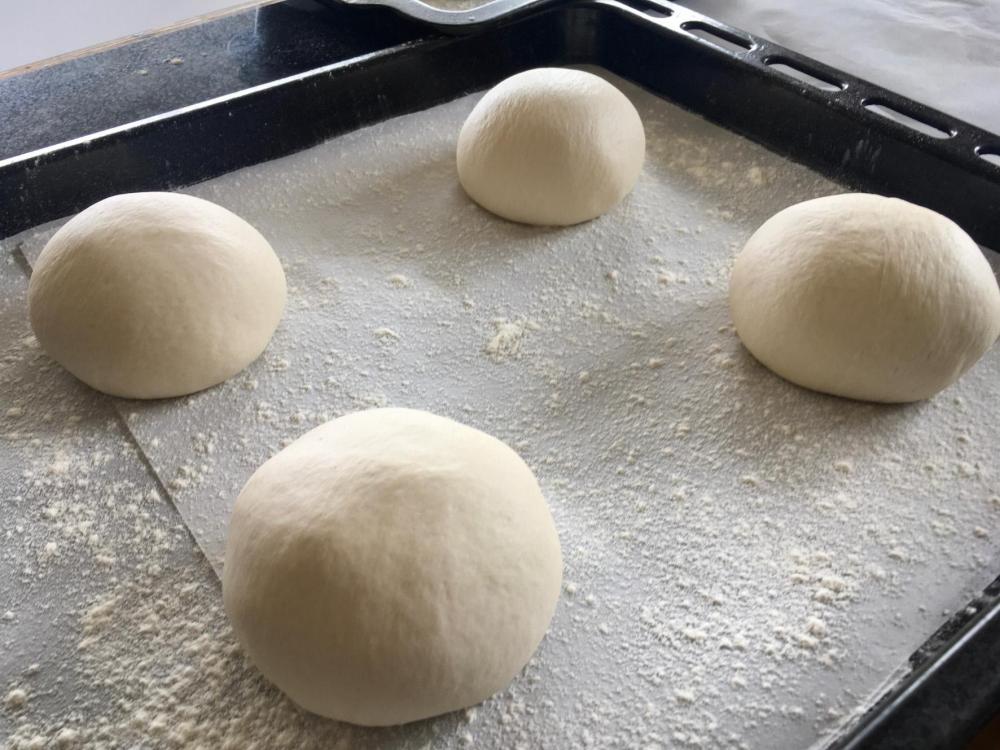
After second ferment:
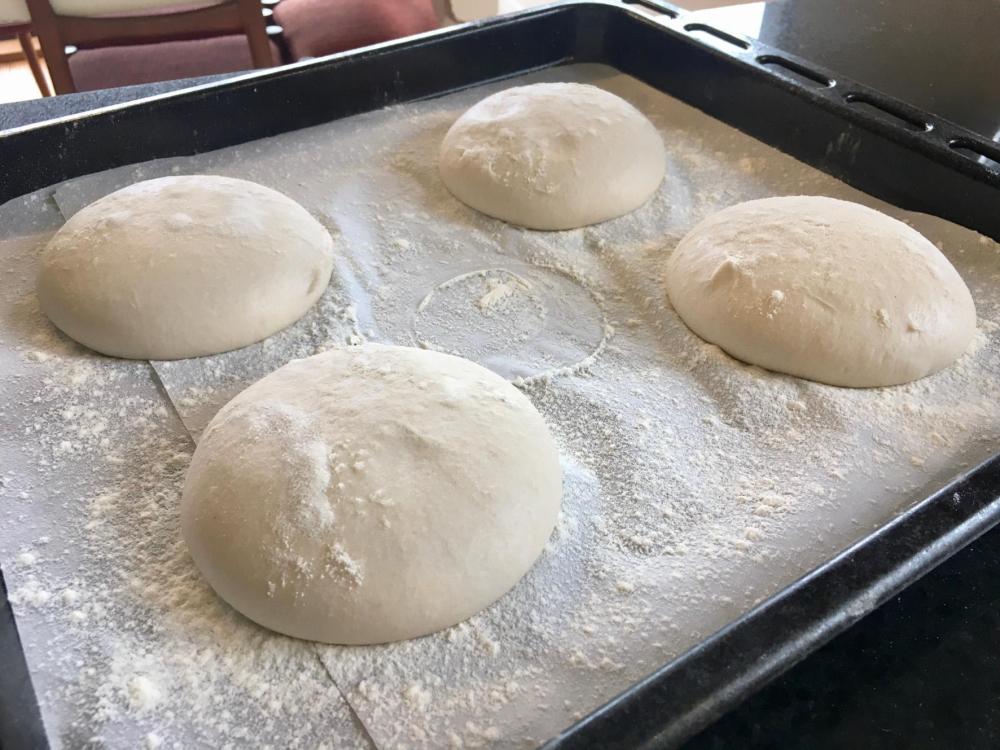
Stretched dough:





-
 5
5
-
 1
1
-
-
Hey all,
What awesome cookware can I get during a visit to Mexico City? I'm not really so keen on clay pottery so what else is there? I'm quite keen on getting a cast iron Comal but not sure what else to look for. Any ideas would be most appreciated.
Already have a great tortilla press and lime juicer.
-
Thanks for the resources everyone. If others are interested I also came across THIS list of recipes by one of the chefs from 'Ultimate Braai Master' ... also there are a bunch of recipes HERE on the Ultimate Braai Master website. Alot of which look quite modern and delicious!
I've ordered a small batch of books from South Africa ... who knows if they will actually arrive though
 If they do I'll order that Reuben on Fire book as well. Looks awesome
If they do I'll order that Reuben on Fire book as well. Looks awesomeEDIT: also just came across this free ebook titled "Cape Wine Braai Masters" it appears to be an ebook put together by Wine.co.za and it's fairly substantial and of a decently high quality for a free book. You can look through and down load it HERE or from the wine.co.za page about it HERE. Recipes look good too

-
 2
2
-
-
I spent a long time trying to figure this out for myself as well.
In the end I settled on Evernote with the deciding factors being:
1) (And probably most importantly) It's the most likely to last the longest. I can see certain niche recipe programs not being supported in future computer operating systems.
2) It's multi format. I can retrieve my recipes on my iPad (which is nice to cook from in the kitchen) from any computer and from my iPhone in a pinch.
3) Recipes can be stored as text, picture, pdf ... anything really.
-
 1
1
-
-
I'm looking to invest in some quality Southern African cookbooks but I have no idea whats good and its quite difficult to figure it out!
I don't live in SA, infact I live on the other side of the world! But I recently came across some of Justin Bonello's books. His books are part travel part cookbooks and he covers alot of traditional South African recipes. His books are hard to get ahold of though.
Can anyone recommend me any other recent (last 10 years or so) quality cookbooks that cover South African or rather "Southern African" cuisine.
Thanks
-
I've made the pastry cream from Modernist Cuisine at Home with good results: the ratios are
Heavy cream 100%
Whole milk 100%
Sugar 64%
Salt .3%
Egg yolks 200%
Butter 50%
The egg yolks are cooked at 80°C for 35 minutes and then blended with the remaining ingredients (potentially after the cream has been infused with a flavoring).
I also made this. But with poor results. Mine did not set up at all. If you took a slice out of the tart within an hour most of the filling had oozed out
 ... Next time I make this I will use gelatine to set it.
... Next time I make this I will use gelatine to set it. -
Thanks I'll give that a go. Relative humidity is actually quite high in my curing chamber so I might skip the muslin.
-
Keen to try that Cape curry thanks JohnT

At the moment for my 'entry' I'm leaning toward a Beef Rendang. I was reading the Wiki page on Rendang today and was blown away by how awesome it is. This curry has such a cool story behind it (cultural significance, meat preservation etc.). I'll do a test run within a couple of weeks.
-
Hey all. I'm making my first Bresaola at the moment. It's currently in it's first week of curing. Keen to ask a few questions:
- Should I wrap it in muslin? I know I don't need to but is there any benefit?
- Should I inoculate with mold? ... again, I know I don't need to but what are peoples experiences?
- Do you have any other tips so I can get a good result the first time?
Cheers.
-
It's probably worth noting that this 'event' is currently a couple of months away so I have plenty of time to practice and learn a few things

My favourite curry is beef rendang. ... Let me know if you want a recipe - I am getting one from a friend that has just been to Indonesia.
I'd love a good Rendang recipe! Very much so. This is something I'd love to add to my quiver regardless of this potluck

The thing which occurs to me is to make a goat curry. In the States, at least, this would be somewhat outre. There's a Caribbean version, derivitive of Indian but with a few quirks, especially the use of habanero chiles for heat. Don't know whether this suits your objective, but it's what I'd do.
I've seen a bunch of local butchers stock goat as well so might be worth a try. I've also seen 'rabbit' at one of the local butchers. I wonder how that would go down. Shock factor would be good
You are not quite correct about South Africa curries. Yes, there are a lot of Indian style ones due to the Indian population in the north eastern region of the country (Kwa-Zulu Natal). However, there is also a large population of Cape Malay people in the Western Cape region who make a very different curry known simply as Cape Malay Curry. It is a far milder curry, using different spice mixes compared to the Indian curry. Do a search on the net for "Cape Malay Curry" and you will be surprised. I will try and dig up a recipe and post it for you later in the day.
Corrected! I almost feel a little ashamed about how little I know of South African curries seen that I was born there ! ! !

Why not make bunny chow? You could maybe serve it in small diner rolls instead of the usual half loaf.
I like this idea. It would have to be a killer curry in there though. My mum made this occasionaly growing up, love this dish.
You could always make currywurst from scratch.....
I really like the idea of bringing something 'curry related' that is not simply a curry, and curryworst is on that track. However I haven't heard many good thing about curryworst, but alot of bad!
Nepalese cuisine is very, very tasty, and also unusual in the West in comparison with Indian or Thai. It is somewhat similar to Indian and to Chinese (or more accurately Tibetan) food, but with unique spicing including bay and nutmeg as well as the common Asian aromatics, and a herb called jimbu that only grows in this region. It seems lighter than Indian dishes to me. You can recognise some of the words if you are familiar with Indian takeaway menus, for instance alu = potato; dal = bean stew; roti = bread; pulao = rice, but the dishes themselves are different; pulao is fried rice rather than steamed; roti is made of rice flour and ring-shaped; alu tama is a curry that includes bamboo shoots. Curries are called tarkari.
Cheers! I will track down and make a couple of Nepalese curries. Nice to know a little about the naming too.
-
So I've been invited to a light hearted 'Curry Cookoff' which for most people will be just a pot luck but for a few (myself included) it will be a fun challenge.
Now I suspect that everyone will be bringing their best version of their favourite Indian or Thai curry as that is all that anyone eats around here. So I figured I could create a bit of variety but taking along something quite different or unsual but still sits under the 'Curry Umbrella'.
Its quite broad when you really start to think about it so I need a bit of help with what might be some good options (recipes or where to get recipes would help but are not essential at this stage).
I don't have any criteria at this stage i.e. It doesn't necessarily need to be mild, and it doesn't necessarily need to appeal to all!
So far I've been quite interested in Ethiopian curries but I've only ever had one in my entire life (and it was goooooood). South African curries, althought these are quite close to indian curries. I'm not so sold on Japanese curries for this but I do love them.
-
Merkinz,
From here, it looks like you have the upper part (collar) of what we call a "Boston Butt."
That is what's cured (often after trimming) to make coppa or cottage ham.
See BriCan's first post in the following link....he demonstrates how the collar is separated from a full Boston Butt and prepared for coppa.....
Thanks Martin!
That is exactly what I was looking for. This kind of stuff is had to find using google but you sir are a wealth of knowledge! ... You just helped me with the nitrite burned bacon on chefsteps

Can I just pay you to come and teach me the way of charcuterie?

-
 1
1
-
-
Great! Thanks for the comments

-
Hey, Merkinz. Good to have you back.
A while ago you were talking about moving to Wellington. If you did, go and see Preston's in Hopper Street; specifically a gentleman called Fred. He's the guy I go to for obscurities - he did me a saddle of lamb a while back.
HAH! yes! I remember, and yes I did just move back to Wellington! Great to be 'home'
 (eastbourne).
(eastbourne).I've been getting alot of belly from prestons lately for bacon and I just got an 'eye of round' for bresaola. I love that place.

I'm still keen to know more about this 'Scotch Roast' thought. They come up on special occasionally and if they actually happen to be a specific cut I can use for charcuterie it might save me alot of money as every time I've been to a butcher in the past reqesting a 'custom cut' it has cost me an arm and a leg.
I just got a wine fridge for curing and it holds a nice steady humidity (70 - 75%). I'm really excited about the things I can cure.

-
Hey people. Been a while since I've posted I think. I still read regularly however

I just started walking down the Charcuterie lane and I have an issue I need help with.
The other week at the supermaket here in New Zealand they had "Half Price Whole Scotch Roasts" of pig. "Scotch fillet" is a fairly common cut here. It's usually sliced into steaks and people fry them up like that. I know it comes form the 'upper shoulder / neck' region and is usually more expensive than the 'shoulder roasts' we get here because of the higher fat content and lack of any bone. I couldn't resist the price so I bought one and froze it to use later for whatever comes to mind.
Now I'm working on a few charcuterie projects and one of the ones I wanted to try was Coppa. I have some understanding of where the coppa cut comes from but you never see a "Coppa" cut at the butchers around here. The butchers I've asked as well have no idea what it is.
Now going back and looking at the 'Scotch Roast' I bought, it looks like it might be a Coppa, a half of a Coppa, a portion of the Coppa, or simply come from the same region of the Coppa. Can someone please help me identify what I bought, tell me if it's a Coppa (whole or part) and if I can cure and dry it. It is in the 5 - 6lb realm if memory serves me correct. Any help, even a point in the right direction would be of immense help right now.




-
Had great results tonight! Cooked 400g of fresh pasta in 5.5L of water for 60 seconds then scooped out the pasta with a slotted spoon straight into a pan with a little oil and some sautéed pancetta. Poured in 60ml of the pasta water and 135ml of egg yolks (cooked sous vide at 62°C) and tossed ... came out amazing. Best home made pasta I've ever made.

Thanks for the help

-
 2
2
-
-
Thanks for the comments, my doughs definitely aren't too wet, they seem almost impossible to work at the beginning - barely sticking to itself - then I rest it anywhere between 1 and 24 hours before rolling then cooking. I tend to steer clear of letting it dry out before cooking but have tried this once or twice to no avail.
Reading your comments I think I may not be taking it to the sauce quick enough. I tend to cook, remove pasta to colander and before I dress it I usually faf about for a minute or two while I heat the sauce up or some such thing... Tomorrow I'll focus on basically taking it from the cooking water straight to the sauce!
I'll also add more water to my pot I boil the pasta in. Currently I'm using around 3 liters for 400 - 500g pasta.
Thanks for the help.
-
I need help with some home made pasta (hopefully quickly too as I'm cooking it for guests tomorrow night!).
My problem is that, relative to dried pasta, it ALWAYS ends up kinda sticking to itself so when you stick your fork in to lift up 4 - 6 strands you always end up lifting up half the plate or at least a large tangled stuck together mess.
How do I get it to be a little more 'slippery' per se?
My usual technique is to cook the fresh pasta for 30 - 90 seconds in boiling, salted water. Remove and drain in a colander then dress with sauce / oil / butter / pesto ... always the same issue.
Note I've experimented with the following and all yielded the same 'self sticking' results to some extent:
- Traditional pasta dough recipe
- Modernist Cuisine pasta dough with xanthan gum
- Modernist Cuisine At Home pasta dough with high dosing of vital wheat gluten
- Excessive dressing with oil or buttery sauce
Help me!

-
I'll definitely pass. Not interested at all, wish he had a new cook book out.
I agree, I bought the MC and MCAH but this is where I bow out. If i want to look at pictures of food I'll just pick up one of the books I already have

-
Anyway, anyone have any recommended times & temps for pork belly? Specifically for a traditional braised texture that will then be portioned then deep fried.
Thanks
anyone?

-
Thanks, Nick. I don't know why I could find it. I'm trying it tonight.
Yeah thats the link, however I can't seem to open it here on my work computer... I get a page of eternal loading. Strange.
I'd be interested to hear what you think of the dish. I really love it, I added a little bit of Trisol to my bread crumb mixture (maybe 15 - 20%) for extra crispness.
-
Im very pleased you are using a cooler. I hope you can get a set of them for various applications.
i have three.
best of luck!
Yeah I only just managed to find the perfect sized cooler. And I cut a nice slice out of the lid:

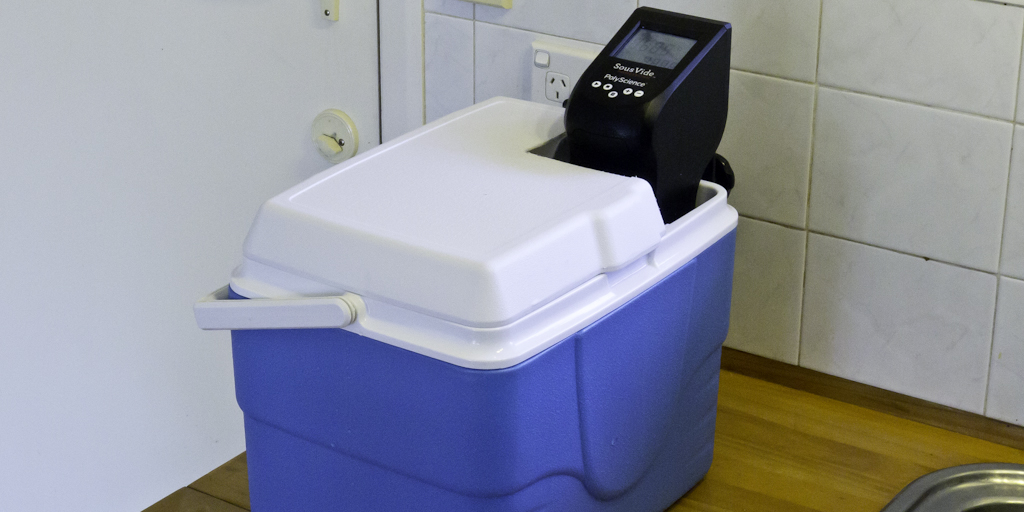



Ooni Pizza Oven
in Kitchen Consumer
Posted
Thanks for the very insightful reply! Very interesting 🤔 I'll give this another go this coming week with the changes you've suggested. I'll seek out some better yeast too, I've seen a few vacuum packed varieties in the shops here, but never one jarred.
🤣 I'll save the water for the pizzas and find a nice single malt for my spiritual renewal 😂